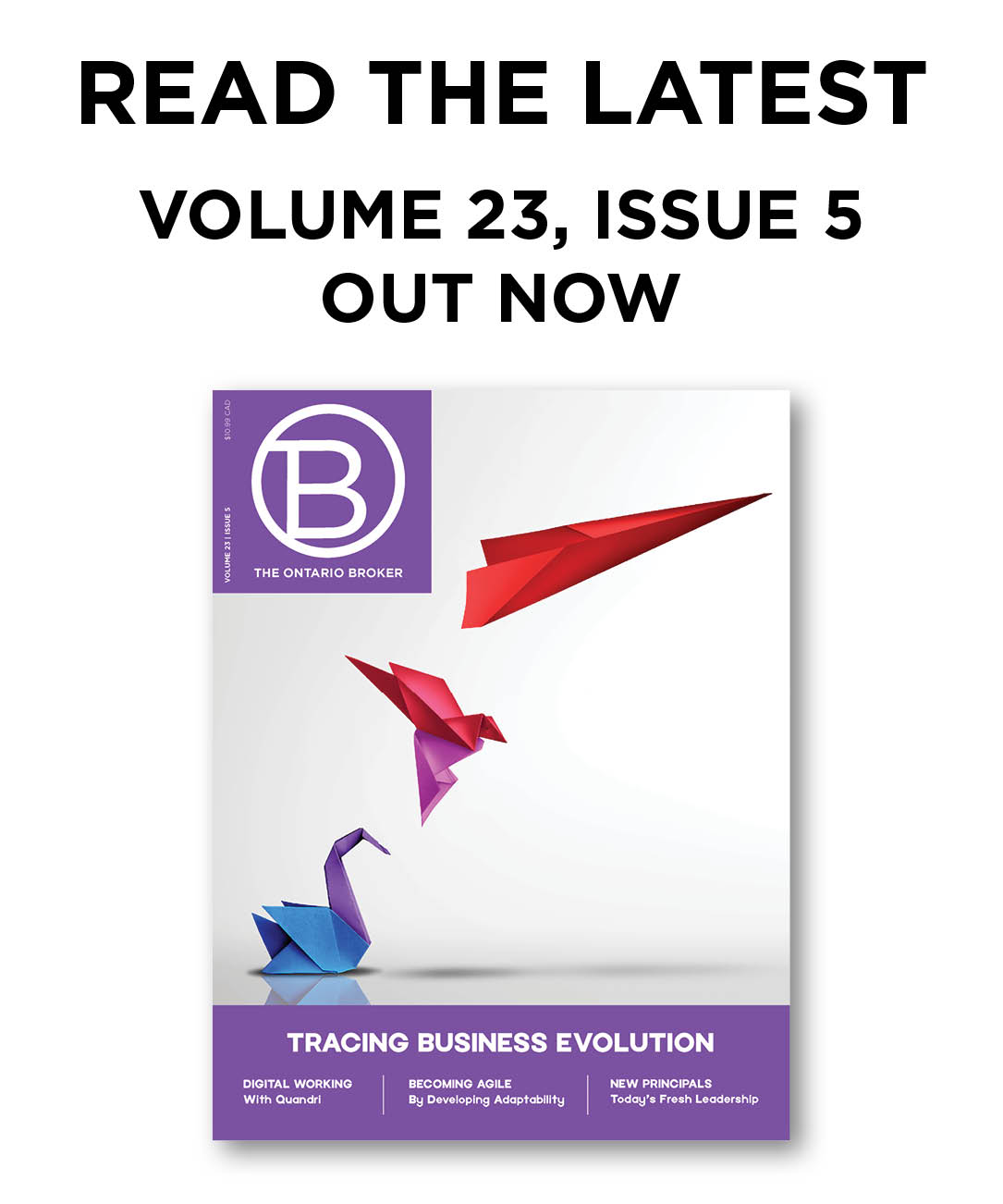

Stephen Billyard—President, Billyard Insurance Group

Sukhdeep Kang—CEO, Armour Insurance

Rishi Jaitley—President, My Insurance Broker
With good leadership, you can create a vision and can motivate those around you to make it a reality. A good leader can inspire everyone in an organization to achieve their best. We spoke with three leaders in the broker channel to see how they were able to develop their leadership skills and what it takes to be a successful leader.
How did you develop your leadership skills?
SB: It has taken time and experience and continues to be a work in progress. Failure, success, winning and losing—I’ve had my fair share of each of these and have learned something every time. I’ve also had the good fortune of observing traits of other great leaders around me, including colleagues in my own organization, competitors and mentors.
SK: I developed my leadership skills by practicing the three S’s: self-discipline, self-motivation and self-improvement. I believe in continuous learning and improving myself every single day. I choose to listen more than share and believe in a lead-by-example-attitude. I consistently read the stories of failure and hardship amongst prominent leaders and takeaway the lessons, applying it to my business, this makes one more aware, wise and teaches us more than the success stories. I admitted my mistakes and worked hard to improve on them. I developed effective communication skills and improved my technical skills to match the changing trends in the industry.
RJ: Developing the tools for success in a leadership role is a lifelong process. I have been privileged to work with some of the industry’s most elite talents both within and outside our organization. One simple rule has always remained consistent and most relevant—learning is forever. One must look for every avenue to learn from their peers, superiors and even junior associates to remain vigilant in the pursuit of tomorrow. I would encourage all aspiring leaders to continue their education. Organizations such as the IBAO have made it even easier today to achieve success toward these designations. There’s so much information available to allow one to achieve greater heights as an insurance professional.
What would you say are the top attributes and skills to be a successful leader?
SB: Vision, communication and execution are the key attributes of a successful leader. It’s a leader’s responsibility to see the entire playing field, all the possible opportunities and threats, and pull together a clear strategy to move the organization forward. Leaders must then communicate that vision effectively, leading with clarity, flexibility and inspiration. When the vision is understood, empower your teams, remove obstacles and provide the tools and guidance needed for effective execution.
SK: Top attributes of a great leader are prioritizing personal development and focusing on developing your team. A compelling vision and timely execution with full involvement of the team can contribute a lot to success. A leader’s ethical approach and utmost professionalism must be two leading traits. In addition, innovation and embracing technology are key.
RJ: I would find it easiest to categorize it by these three fundamental pillars to success: vision, perseverance and compassion. Vision is instrumental to knowing where you are going. A leader must not only identify goals and ambitions but those that synergize with the organization’s resources. Perseverance and being ready to stay the course takes an immense amount of strength. There will always be challenges and obstacles that will test your ability to remain dedicated to your work. Compassion is what humanizes our journeys together. We must understand that everyone—customers, staff and associates, partners and otherwise—all have their own challenges and ambitions for their own lives and finding a way to align those goals together within an organization yields the best and most harmonious results.
“With good leadership, you can create a vision and can motivate those around you to make it a reality. A good leader can inspire everyone in an organization to achieve their best. We spoke with three leaders in the broker channel to see how they were able to develop their leadership skills and what it takes to be a successful leader.”
What do you do to foster leadership skills within your team?
SB: Believe in your team and trust their abilities. Successful leaders and entrepreneurs naturally tend to feel like they always know best and can have a hard time letting go of key projects. A company can’t scale this way, if you’ve done your work as a leader and communicated your vision well, hand the keys over to your people and let them do the driving.
SK: One of the benefits of being a small/medium-sized business is that we can afford to be a flat organization. We don’t follow hierarchies when it comes to problem-solving for customer outcomes or planning for our own growth. Every team member is aware of Armour’s vision and what we stand for, which enables and empowers everyone to act and decide like how I would do. Making mistakes is embodied as a part of the learning process—and that’s exactly what pushes us to be better than yesterday.
RJ: Our organization leverages the opinions and decisions of our leadership team. However, without experience and understanding, it’s difficult to contribute. MIB encourages all its leaders to accelerate their potential in any and all impactful investments in growth. Some of our team members have taken on leadership courses, continued education in fields of marketing, and even gone back to take on their MBAs. MIB makes an investment in its team investing in themselves, as we know their growth and pursuits become future values for the organization itself.
What unique challenges are facing leadership in the industry right now?
SB: Most organizations are decentralizing; employees are working from home or across multiple locations. This creates unique challenges for leadership as we have lost the interpersonal office communication that is so critical to successful leadership. The responsibility of the leader to be an effective communicator is especially important now, and leaders must learn to use the technology at our disposal to reach our people and shape our communication style, so our vision doesn’t get lost in all the digital noise.
SK: From a business standpoint, the single largest challenge to the wider industry is climate change and related fallouts. I think there is a collective underestimation of the immediacy and the quantum of impact. All stakeholders would be required to transcend the frontiers of traditional insurance of risk transfer, and address risk mitigation. The very existence of many players would be stress tested.
Another challenge we often discuss is having the right strategy for digital transformation. Though the large players in the industry have improved expense ratios and profitability through improvements in process efficiency, there’s a need to tie digital investments to high-value business objectives.
RJ: Resourcing has certainly become a rampant issue. With carriers and broker competitors all competing for the same pool, it seems finding talent has become more competitive than ever. Although we do not see our business or organization as one that can be done without the personal and compassionate touch of a human, we know that their all tools that can aid in their ability to most effectively and efficiently work.
What are the biggest opportunities you see in the industry today?
SB: Leveraging technology for communication and collaboration is a big opportunity to accelerate the performance of your organization. While the erosion of interpersonal communication has created challenges for traditional styles of leadership, the broad adoption of video communication and collaboration software has created new opportunities to engage teams more frequently, effectively and in ways that haven’t been done before.
SK: The insurance industry has enjoyed historic highs in profitability over the last two years, and now is the time to put the money where the mouth is. Insurance has lagged behind other industries to embrace technology and change. Current insurance products are mostly one-size-fits-all, whereas the customers increasingly demand tailored products. Technology like usage-based insurance would help large incumbents maintain their competitiveness and market share. Underwriting automation is another area that remains on the radar of all insurers. Whether a customer is looking for auto, property or renters’ insurance – they are always looking for carriers that can provide quick and affordable coverage.
RJ: Niche products and services. Without a doubt, we see customer behaviour gravitating towards the commoditization of home and auto or traditional personal lines products. We must remain diligent in offering our customers the most comprehensive and competitive products and pricing when it comes to this category. We need to explore how we can provide most product verticals not available through digital offerings. Whether that be a small business, commercial needs, or life and investment products. We need to continue to explore the depth of our available tools and services to ensure that our customers have every end of their financial future protected. Otherwise, we leave ourselves susceptible to the competition by a failure of our own efforts.





